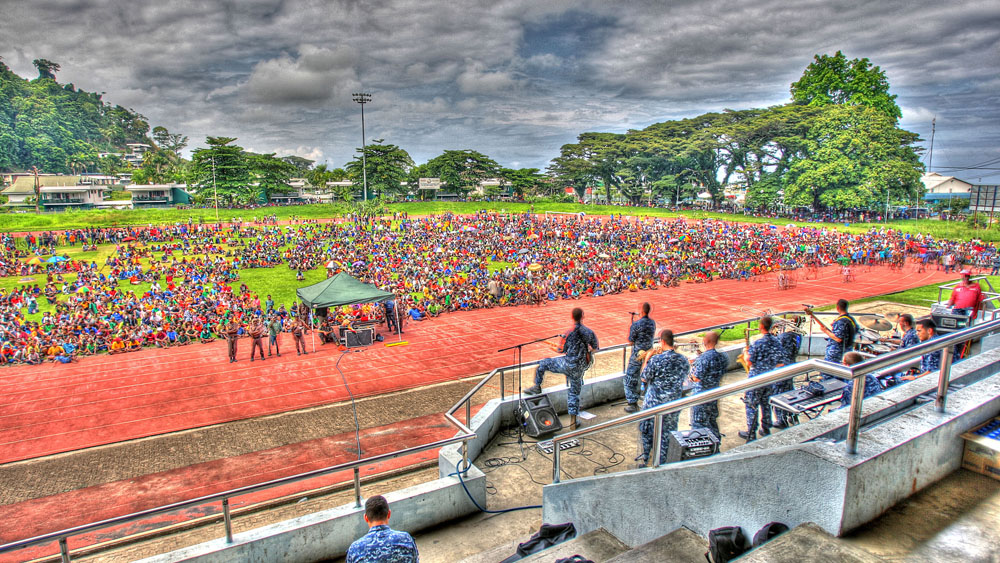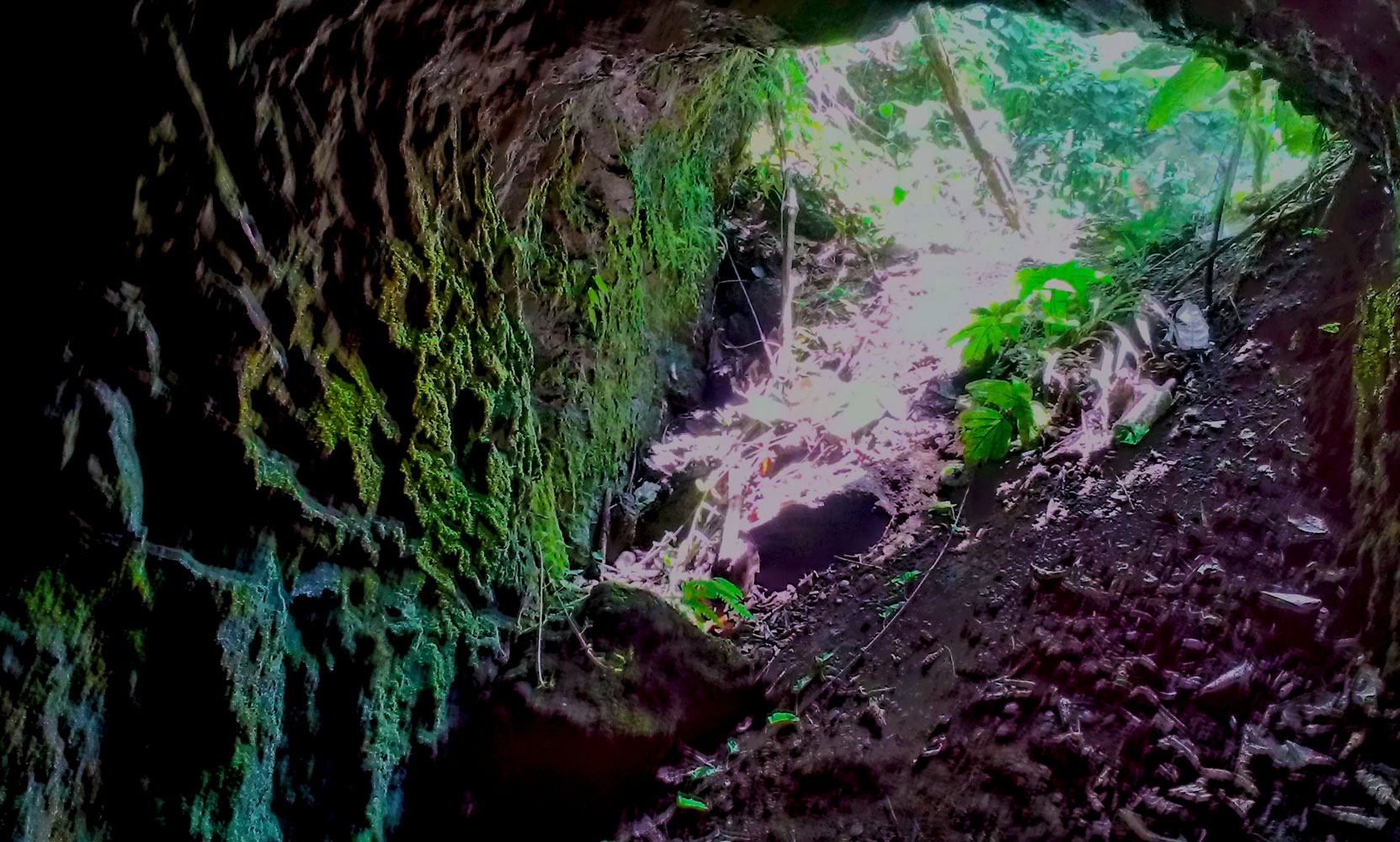|
Voco Point
Voco Point is a suburb of Lae in the Morobe Province, Papua New Guinea. Voco Point is one of the busiest coastal trading points in the country and coastal vessels from throughout the country, from Alotau to Manus, from Lihir to Vanimo line up at the wharves. The passenger boats ferry people to Finschhafen, the Siassi islands, Kimbe, Rabaul, New Ireland, Oro Bay, Alotau, Madang, and Wewak. The local Lae villages call the area around Voco Point ''Asiawi'', which according to mythology, used to be a long point that went out much further but was eaten by the evil spirit ''Yaayaa''. Location Voco Point is located 1 km east of the main port of Lae and south of the main town on the coast. Nomenclature The pre-World War I Vacuum Oil Company, later called Mobil, had a depot at the site of Voco Point. ''Voco'' is short for Vacuum Oil Company. History The main township of Lae was originally on the flats between Voco Point and the airfield. The site was later shifted to the t ... [...More Info...] [...Related Items...] OR: [Wikipedia] [Google] [Baidu] |
Provinces Of Papua New Guinea
For administrative purposes, Papua New Guinea is divided into administrative divisions Administrative division, administrative unit,Article 3(1). country subdivision, administrative region, subnational entity, constituent state, as well as many similar terms, are generic names for geographical areas into which a particular, ind ... called provinces. There are 22 provincial-level divisions, which include #List of provinces, 20 provinces, the Autonomous Region of Bougainville, and the National Capital District (Papua New Guinea), National Capital District of Port Moresby. In 2009, the National Parliament of Papua New Guinea created two additional provinces, that officially came into being on 17 May 2012. [...More Info...] [...Related Items...] OR: [Wikipedia] [Google] [Baidu] |
The Heckling Hare
''The Heckling Hare'' is a ''Merrie Melodies'' cartoon, released on July 5, 1941, and featuring Bugs Bunny and a dopey dog named Willoughby. The cartoon was directed by Tex Avery, written by Michael Maltese, animated by soon-to-be director Robert McKimson, and with musical direction by Carl W. Stalling. In a style that was becoming typical of the Bugs character, he easily outwitted and tormented his antagonist through the short, his only concern being what to do next to the dog. This is the second-to-last Bugs Bunny cartoon directed by Tex Avery to be released following a dispute with producer Leon Schlesinger during production (see "Original Ending" below). The last, ''All This and Rabbit Stew'', was produced before this film. Additionally, it was the fifth cartoon for Bugs and the 55th cartoon Avery directed at Warner Bros. The ''Merrie Melodies'' opening sequence also featured the first usage of the Warner Bros. shield logo zooming in with a carrot-munching Bugs Bunny lying ... [...More Info...] [...Related Items...] OR: [Wikipedia] [Google] [Baidu] |
VE Day
Victory in Europe Day is the day celebrating the formal acceptance by the Allies of World War II of Germany's unconditional surrender of its armed forces on Tuesday, 8 May 1945, marking the official end of World War II in Europe in the Eastern Front, with the last shots fired on the 11th. Russia and some former Soviet countries celebrate on 9 May. Several countries observe public holidays on the day each year, also called Victory Over Fascism Day, Liberation Day or Victory Day. In the UK it is often abbreviated to VE Day, or V-E Day in the US, a term which existed as early as September 1944, in anticipation of victory. The end of all combat actions was specified as 23:01 Central European Time, which was already 9 May in eastern Europe, and thus several former Soviet bloc countries including Russia and Belarus, as well as some former Yugoslav countries like Serbia, celebrate Victory Day on 9 May. History Adolf Hitler, the Nazi leader, had committed suicide on 30 April dur ... [...More Info...] [...Related Items...] OR: [Wikipedia] [Google] [Baidu] |
Don't Fence Me In (song)
"Don't Fence Me In" is a popular American song written in 1934, with music by Cole Porter and lyrics by Robert Fletcher and Cole Porter. Members of the Western Writers of America chose it as one of the Top 100 Western songs of all time. Origins Originally written in 1934 for ''Adios, Argentina,'' an unproduced 20th Century Fox film musical, "Don't Fence Me In" was based on text by Robert (Bob) Fletcher, a poet and engineer with the Department of Highways in Helena, Montana. Cole Porter, who had been asked to write a cowboy song for the 20th Century Fox musical, bought the poem from Fletcher for $250. Porter reworked Fletcher's poem, and when the song was first published, Porter was credited with sole authorship. Porter had wanted to give Fletcher co-authorship credit, but his publishers did not allow it. The original copyright publication notice dated October 10, 1944 and the copyright card dated and filed on October 12, 1944 in the U.S. Copyright Office solely lists words and mu ... [...More Info...] [...Related Items...] OR: [Wikipedia] [Google] [Baidu] |
Sir Ignatius Kilage Stadium
The Sir Ignatius Kilage Sports Stadium is an association football stadium located in Lae, Papua New Guinea. It was named after Sir Ignatius Kilage who was the fourth Governor General of Papua New Guinea. The stadium, which is part of the larger Sir Ignatius Kilage Sports Complex, features 500 grandstand seats plus an additional 1,000 bench seats. It is the home stadium of the Papua New Guinea National Soccer League Southern Conference. History The stadium was first built in 1990 for the 1991 South Pacific Games. In 2016, the stadium underwent an extensive restoration in preparation for the 2016 Papua New Guinea games. Notable events The stadium has hosted matches of the Papua New Guinea national football team, including a 2018 FIFA World Cup qualification fixture against the Solomon Islands in June 2017. It was originally announced that the stadium would undergo renovations and be a venue for the 2016 FIFA U-20 Women's World Cup. However, it was not one of the final venues cho ... [...More Info...] [...Related Items...] OR: [Wikipedia] [Google] [Baidu] |
9th Division (Australia)
The 9th Division was a division of the Australian Army that served during World War II. It was the fourth division raised for the Second Australian Imperial Force (2nd AIF). The distinctions of the division include it being: * in front line combat longer, cumulatively, than any other Australian division;Johnston (2002), p. ix. * one of the Australian military's most decorated formations; * the only 2nd AIF division formed in the United Kingdom, from infantry brigades and support units formed in Australia; * praised by both Allied and Axis generals, including Bernard Montgomery and Erwin Rommel, as well as non-Australian military historians, and; * like the 6th and 7th Divisions, being one of only a few Allied army units to serve in both the Mediterranean and Pacific theatres. During 1940, the component units of the 9th Division were sent to the UK to defend it against a possible German invasion. After serving during 1941–1942 in the North African campaign, at the Sieg ... [...More Info...] [...Related Items...] OR: [Wikipedia] [Google] [Baidu] |
7th Division (Australia)
The 7th Division was an infantry Division (military), division of the Australian Army. It was formed in February 1940 to serve in World War II, as part of the Second Australian Imperial Force (2nd AIF). The division was raised on the British establishment of nine infantry battalions per division and consisted of two new brigades and three of the original 12 battalions of the 6th Division (Australia), 6th Division forming the third brigade. The division is sometimes known by the nickname "The Silent Seventh", due to a perception that its achievements were unrecognised, in comparison to the other Australian divisions. The origin of this belief appears to be censorship of the part played by the 7th Division in the fierce fighting in the 1941 Syria-Lebanon campaign.James 2017 The 7th Division along with the 6th and 9th Division (Australia), 9th Australian Divisions were the only divisions to serve in both the Middle East and the South West Pacific Area. It was disbanded in 1946, follo ... [...More Info...] [...Related Items...] OR: [Wikipedia] [Google] [Baidu] |
Tunnel Warfare
Tunnel warfare involves war being conducted in tunnel and other underground cavities. It often includes the construction of underground facilities (mining or undermining) in order to attack or defend, and the use of existing natural caves and artificial underground facilities for military purposes. Tunnels can be used to undermine fortifications and slip into enemy territory for a surprise attack, while it can strengthen a defense by creating the possibility of ambush, counterattack and the ability to transfer troops from one portion of the battleground to another unseen and protected. Also, tunnels can serve as shelter from enemy attack. Since antiquity, sappers have used mining against walled cites, fortresses, castles or other strongly held and fortified military positions. Defenders have dug counter-mines to attack miners or destroy a mine threatening their fortifications. Since tunnels are commonplace in urban areas, tunnel warfare is often a feature, though usually a min ... [...More Info...] [...Related Items...] OR: [Wikipedia] [Google] [Baidu] |
Chinatown, Lae
Chinatown is a suburb of Lae in the Morobe Province, Papua New Guinea. History The Chinese people of the Territory came originally from the Kwantang Province of South-east China. They came as worker immigrants in the German regime before 1914. After 1930, trade stores were established mostly by the Chinese, that catered for New Guinean needs rather than those of the Europeans.Suzanne Romaine. Language, Education, and Development: Urban and Rural Tok Pisin in Papua New Guinea'. Oxford University Press; 1992 [retrieved 16 February 2014]. . p. 115. The Chinese presence created a buffer zone between the Europeans and New Guineans and furthermore established Chinatown settlements. World War II In October, Captain N. E. Brand of the 10th Field Ambulance and ten ORs ran an evacuation post in Chinatown Lae and on 8 September 1943, six 65th BS B-17s bombed Chinatown, a concentration of buildings and supplies at Lae. Encountering no anti-aircraft fire or enemy fighter oppo ... [...More Info...] [...Related Items...] OR: [Wikipedia] [Google] [Baidu] |
Eriku
Eriku is a suburb of Lae in the Morobe Province, Papua New Guinea. Nomenclature The name Eriku is said to derive from ''Eric Woo'' which was the first store to be built in the location Location Eriku is located in the North of Lae, East of the Highlands Highway and North of Milford Haven Road. To the South of Eriku are the Lae Botanic Gardens. To the West is the Lae Golf Club. Infrastructure Highlands Transport hub The Eriku Public Motor Vehicle (PMV) terminal is the point of departure from Lae to the highlands. Papindo building In 1987 the Lae Fish Supply company built the Papindo building in Eriku which was the location of the modern supermarket and department store. Andersons Supermarket Andersons Foodland is owned by the Chemcare Group (Chemcare) and is one of the largest supermarkets in Lae. Billboard An electronic advertising billboard is scheduled to be constructed on top of Papindo building in Eriku to coincide with the upcoming PNG games Law ... [...More Info...] [...Related Items...] OR: [Wikipedia] [Google] [Baidu] |



.jpg)

